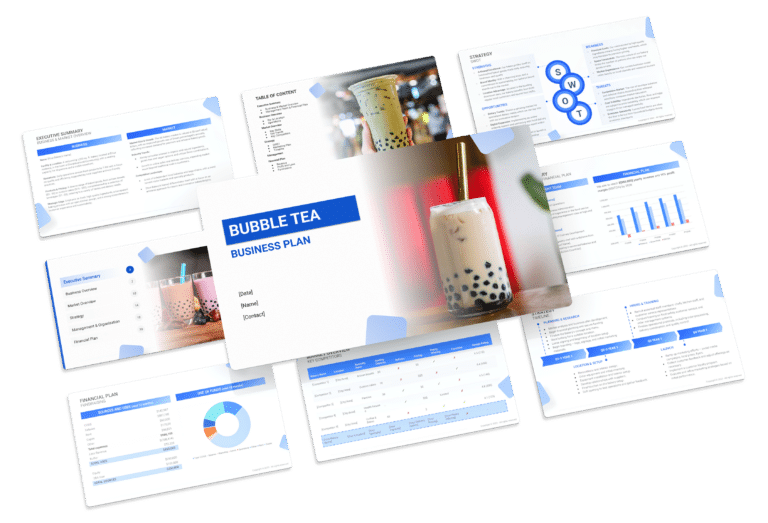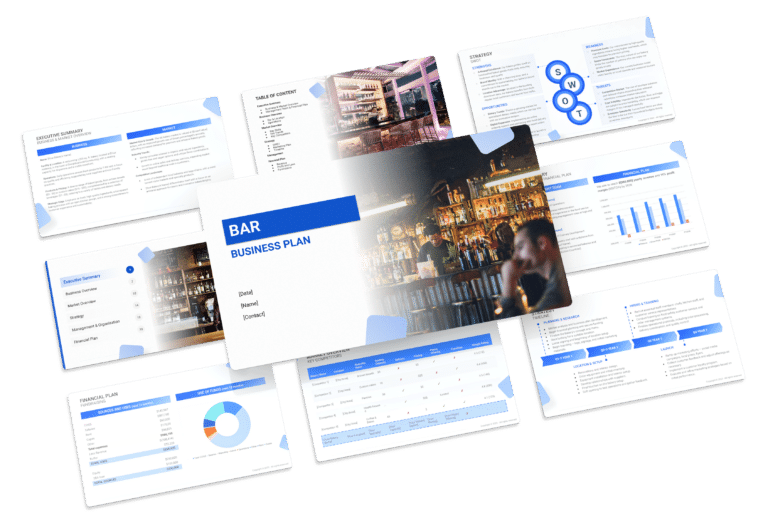How to Prepare a SWOT for a Pizzeria (Example)

A pivotal element in crafting a pizzeria business plan, the SWOT analysis examines internal strengths and weaknesses, as well as external opportunities and threats. Strengths, such as a varied menu and strategic location, contrast with weaknesses like reliance on specific ingredients or limited delivery options.
This strategic evaluation unveils the pizzeria’s market stance, highlighting potential growth areas. For instance, opportunities may stem from the rising demand for artisanal pizzas, while threats could emerge from heightened competition or disruptions in the supply chain.
This article will explore various examples of strengths and weaknesses, providing pizzeria owners valuable insights for strategic business planning.

Strengths
When it comes to your pizzeria studio’s strengths, it’s crucial to recognize the internal attributes and advantages that set your business apart.
- Unique Recipes: Your pizzeria studio might have a secret sauce or a signature pizza that keeps customers coming back.
- Example: Offering a one-of-a-kind “Truffle Delight” pizza with imported truffle oil and specialty cheeses can be a compelling draw for food enthusiasts.
- Skilled Culinary Team: Having a team of experienced chefs who are passionate about creating exceptional pizzas.
- Example: Highlighting your head chef’s extensive training in Italy and showcasing their culinary journey can enhance your brand’s credibility.
- Prime Location: If your pizzeria is situated in a bustling area or near popular attractions, it can attract a steady stream of foot traffic.
- Example: Capitalizing on your location, you can offer convenient takeaway or delivery services to tourists and locals alike.
- Strong Brand Identity: A well-defined brand with a clear mission and values can resonate with customers on a personal level.
- Example: Promoting your commitment to using locally sourced, organic ingredients can appeal to health-conscious customers.
Weaknesses
Understanding your weaknesses is crucial for improvement and growth. These are internal factors that may hinder your pizzeria studio’s success.
- Inconsistent Quality: If your pizza quality varies from one day to another, it can lead to customer dissatisfaction.
- Example: Training your kitchen staff rigorously and implementing quality control measures can help maintain consistent standards.
- Limited Menu: Offering only a few pizza options may limit your customer base and hinder repeat business.
- Example: Expanding your menu to include vegetarian, vegan, and gluten-free options can attract a broader audience.
- High Operational Costs: Excessive overhead costs, such as rent and labor, can eat into your profits.
- Example: Conducting a cost analysis and exploring cost-effective alternatives, like energy-efficient equipment, can improve your bottom line.
- Online Presence: If your online presence is weak or outdated, you may miss out on a substantial portion of potential customers.
- Example: Revamping your website, optimizing it for mobile devices, and actively engaging on social media platforms can boost your online visibility.
Opportunities
Identifying opportunities in the market can help you stay ahead of the competition and capitalize on emerging trends.
- Delivery and Takeout Services: The trend of ordering food online continues to rise, presenting an opportunity to expand your delivery and takeout services.
- Example: Partnering with popular food delivery apps like Uber Eats or Door Dash can help you reach a broader customer base.
- Catering and Events: Offering catering services for events, parties, and corporate gatherings can be a lucrative revenue stream.
- Example: Creating customizable catering packages and marketing them to event planners and businesses can boost bookings.
- Health-Conscious Menu: With an increasing focus on health and wellness, introducing healthier pizza options can attract health-conscious customers.
- Example: Adding a “Fit & Fresh” section to your menu with low-calorie, whole-grain crust pizzas can cater to this demographic.
- Community Engagement: Partnering with local schools, sports teams, or charities can enhance your community presence and foster customer loyalty.
- Example: Organizing monthly fundraisers where a portion of proceeds goes to a local charity can create a positive image for your pizzeria studio.
Threats
To protect your pizzeria studio from potential threats, you need to be aware of external factors that could negatively impact your business.
- Competition: The presence of numerous pizzerias in your area can lead to intense competition for customers.
- Example: Conducting competitive analysis and offering unique promotions can help you stand out.
- Economic Downturn: Economic recessions or downturns can result in reduced consumer spending on dining out.
- Example: Creating budget-friendly meal deals during economic uncertainties can entice cost-conscious customers.
- Health Regulations: Stringent health and safety regulations, especially in the wake of the COVID-19 pandemic, can disrupt normal business operations.
- Example: Implementing strict sanitation and safety protocols can reassure customers and help you comply with regulations.
- Supplier Issues: Dependence on a single supplier for key ingredients can pose a significant risk if that supplier faces disruptions.
- Example: Diversifying your supplier base and having contingency plans can mitigate this threat.





